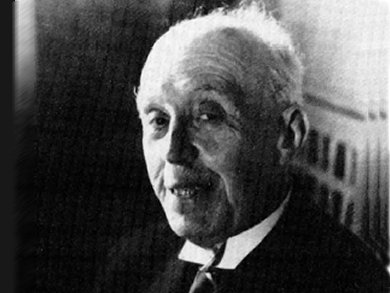March 19, 2012, marks the 25th anniversary on the death of Louis de Broglie, Nobel Prize Winner in Physics. De Broglie is best known for his theory of the wave-particle duality of matter, which he proposed in 1923.
Until de Broglie, physics was divided into two camps: The physics of matter, based particles and atoms which were supposed to obey the laws of classical Newtonian mechanics, and the physics of radiation, based on the idea of wave propagation in a hypothetical continuous medium.
De Broglie’s idea built on the work of Albert Einstein and Max Plank, in particular, Einstein’s work on the photoelectric effect. Einstein had proposed that light existed as quanta of energy (now called photons) after noticing that only light of certain frequencies could generate a current when shined on certain metals. He proposed that the energy of the quanta E were related to the frequency f of the light by:
E = h f
where h is Planck’s constant.
De Broglie extended this and postulated that all matter, not just light, has a wave-like nature. He showed that the wavelength is inversely proportional to the momentum of a particle and that the frequency of matter waves is directly proportional to the particle’s total energy.
This was confirmed experimentally for the electron in 1927 by Clinton Davisson and Lester Germer, Bell Labs, USA, and by George Thomson, University of Aberdeen, Scotland.
De Broglie’s theory of electron matter wave has had profound impact on our understanding of the nature of matter and has been used to develop wave mechanics. In particular, Erwin Schrödinger used how this matter wave should evolve to derive the energy spectrum of hydrogen and Max Born adapted it to find the probability that a particle is at a given place by using the square of the matter wave’s amplitude, leading to the geometric zones of probability described in atomic orbital theory.
English translation of de Broglie’s doctoral thesis Recherches sur la théorie des Quanta (University of Paris, 1924) in:
- Phase Waves of Louis deBroglie,
Jared W. Haslett,
Am. J. Phys. 1972, 40(9), 1315–1320.
DOI: 10.1119/1.1986821
More information on de Broglie’s life:
- Louis de Broglie, 1892–1987,
A. Guinier,
J. Appl. Cryst. 1987, 20(6), 451–452.
DOI: 10.1107/S0021889887085984
This is the answer to Guess the Chemist (3) from March.




